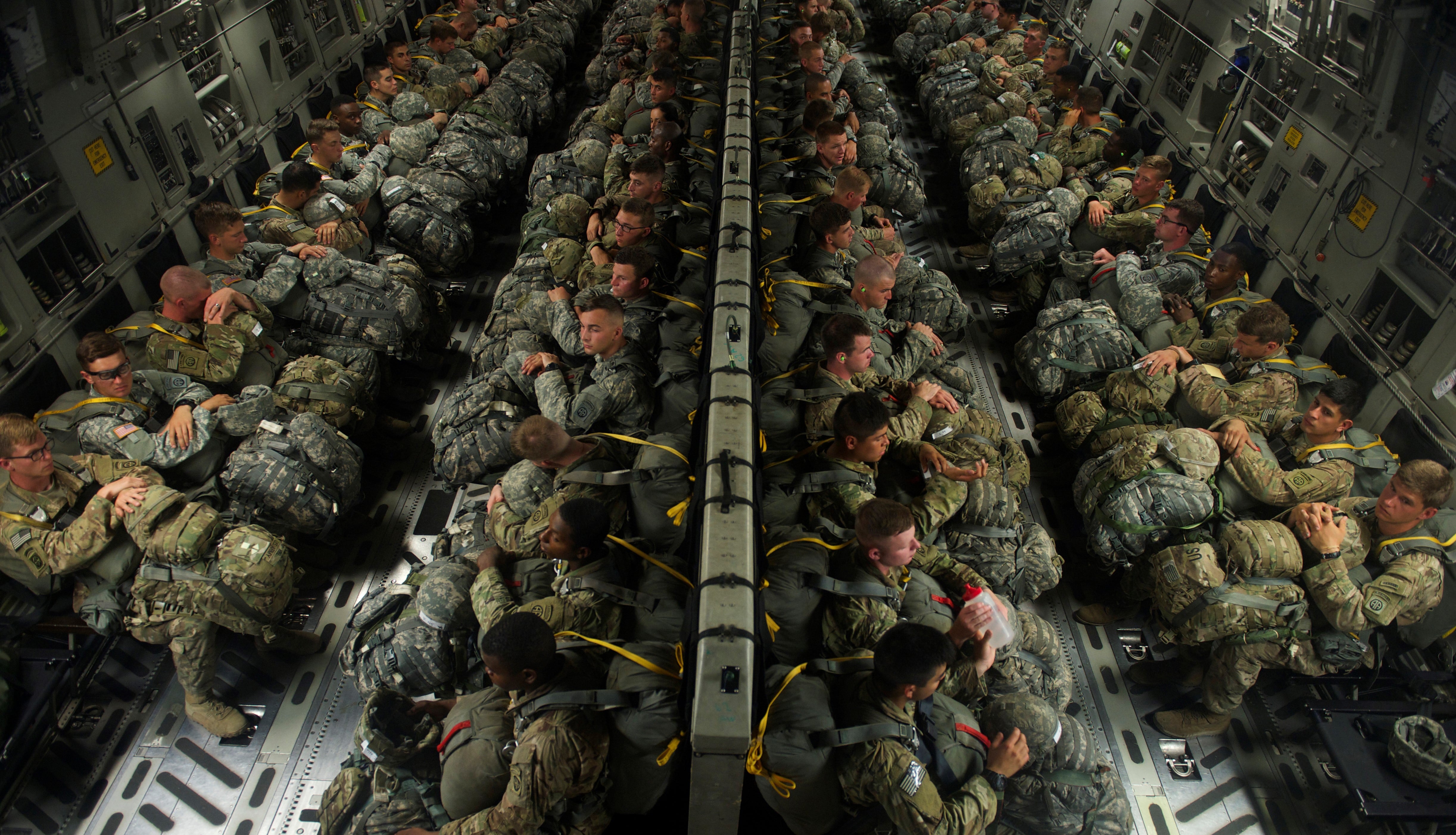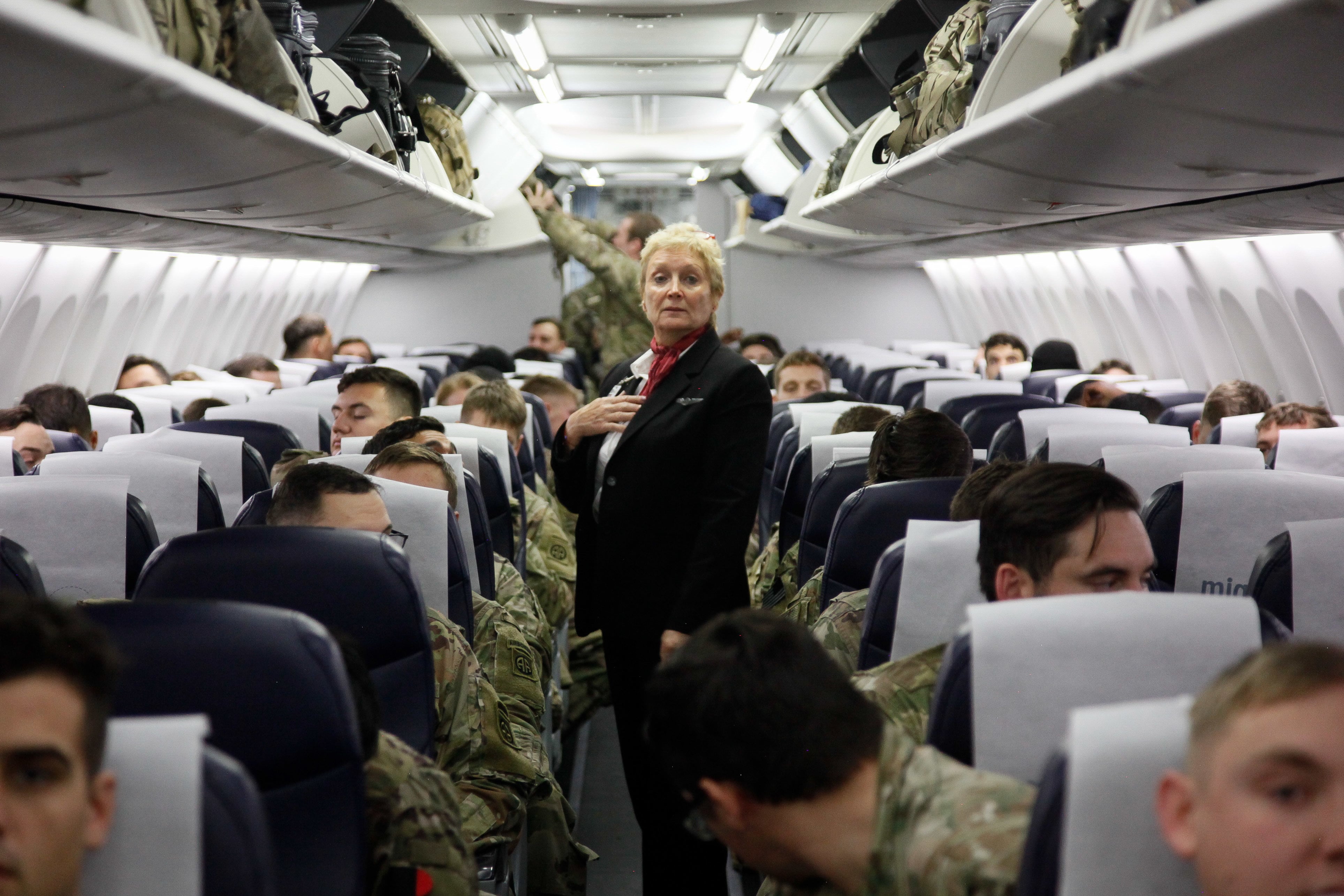Paratroopers deploying to the Middle East were told to leave behind their cellphones, laptops, tablets and other personal electronic devices, according to Army 82nd Airborne Division officials.
The move was made to ensure operational security was maintained during the emergency deployment, which saw 3,500 paratroopers from 1st Brigade Combat Team begin to fly out of Fort Bragg, North Carolina, to Ali Al Salem Air Base, Kuwait, over the first week of January.
“Anything considered a personal electronic device. All those things,” Lt. Col. Mike Burns, division spokesman, told Army Times. “But banned is a harsh word. The decision was made so soldiers weren’t put at risk.”
Burns confirmed that the decision was intended to both ensure that sensitive information pertaining to the deployment and mission was not shared outside official channels, and also to prevent any potential cyberattacks against the soldiers.
RELATED

In a security bulletin posted Saturday, the Department of Homeland Security warned that “Iran maintains a robust cyber program" and “is capable, at a minimum, of carrying out attacks with temporary disruptive effects."
The bulletin primarily is concerned with threats to U.S. infrastructure and private companies.
While Iranian cyber attacks are “on the table, the most consequential capability may be cyber espionage,” John Hultquist, an analyst at the cybersecurity firm FireEye, has warned.
“This is not the normal kind of deployment. The decision [is] 100 percent an operational security and force protection measure,” Maj. Gen. James Mingus, commanding general of the division, told CNN’s Pentagon correspondent.
The paratroopers began deploying to the region following a rapid increase in tensions between the United States and Iran in early January, which culminated in a Thursday night U.S. airstrike that killed Iranian Quds Force commander Gen. Qassem Soleimani. Pentagon officials said at the time Soleimani was “actively developing plans to attack American diplomats and service members,” but has yet to provide proof to support that claim.
Before the strike, an American contractor was killed and several service members were wounded by Katyusha rockets allegedly fired by Iranian-backed Kata’ib Hezbollah militiamen in Iraq. Rocket attacks have continued after the airstrike that killed Soleimani. Abu Mahdi al-Muhandis, leader of Kata’ib Hezbollah, was killed in the strike that also killed Soleimani.
A source at the U.S. embassy in Baghdad previously told Military Times that the recent rocket attack against the embassy compound appears to be more than the usual scare tactic, and that the volley of rocket fire appears to be increasing.
The 82nd Airborne Division’s deployment fell under the auspices of an Immediate Response Force mission. The deployment model emphasizes joint operations and brings more air assets, cyber capabilities and logistical support to paratroopers, according to a primer for the new model viewed by Army Times.
The new plan replaces the Global Response Force model that the division previously utilized, but appears to more heavily emphasize joint forcible entry operations and airborne assaults into denied environments, like that which Iran can produce through air defense systems and cyberattacks.
Kyle Rempfer was an editor and reporter who has covered combat operations, criminal cases, foreign military assistance and training accidents. Before entering journalism, Kyle served in U.S. Air Force Special Tactics and deployed in 2014 to Paktika Province, Afghanistan, and Baghdad, Iraq.





